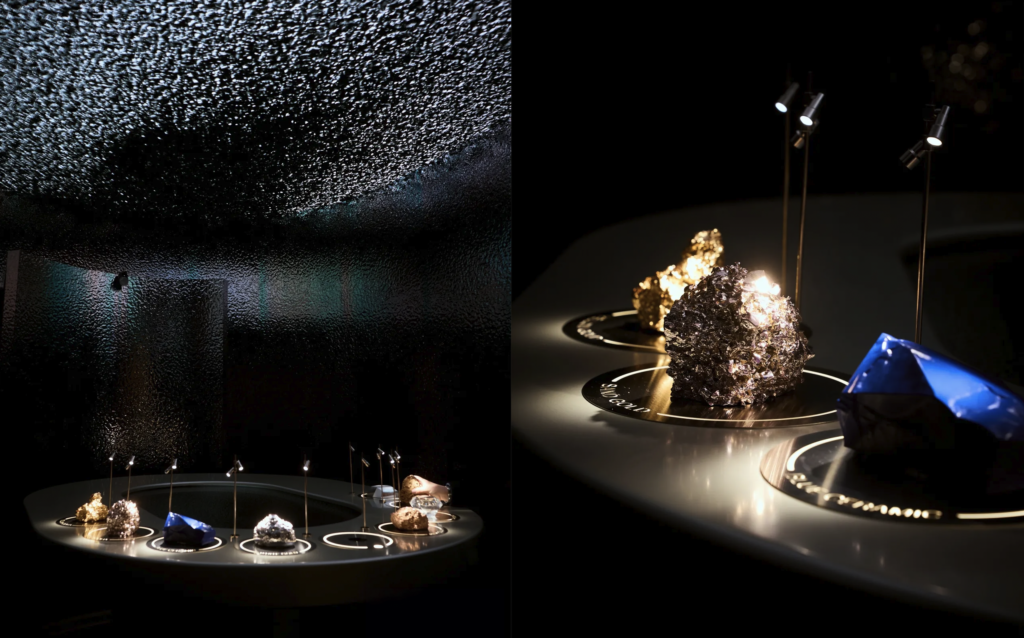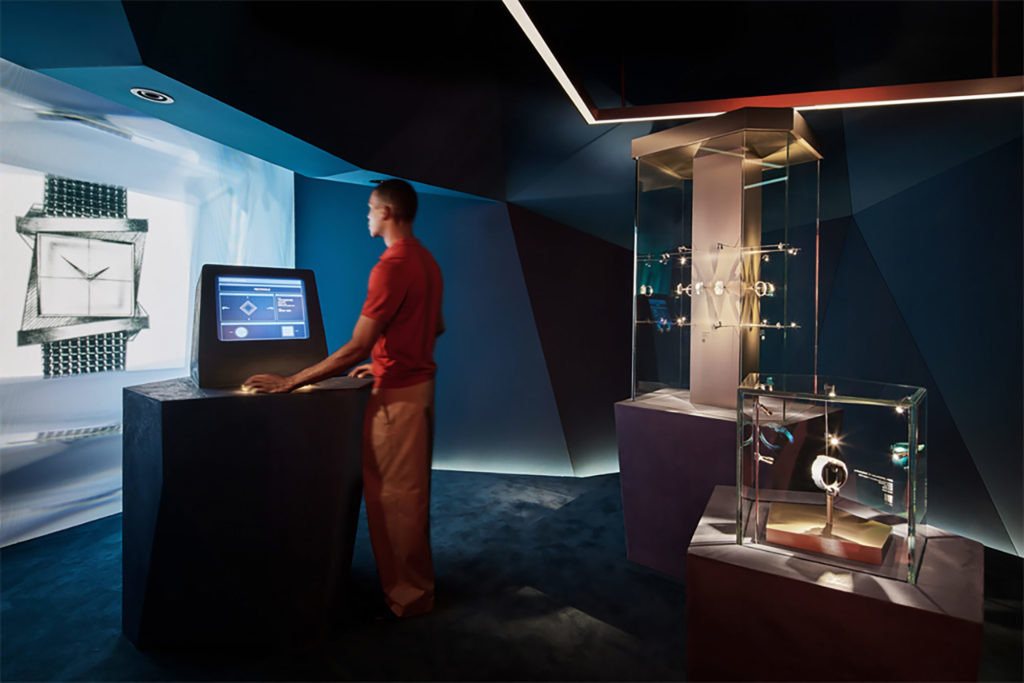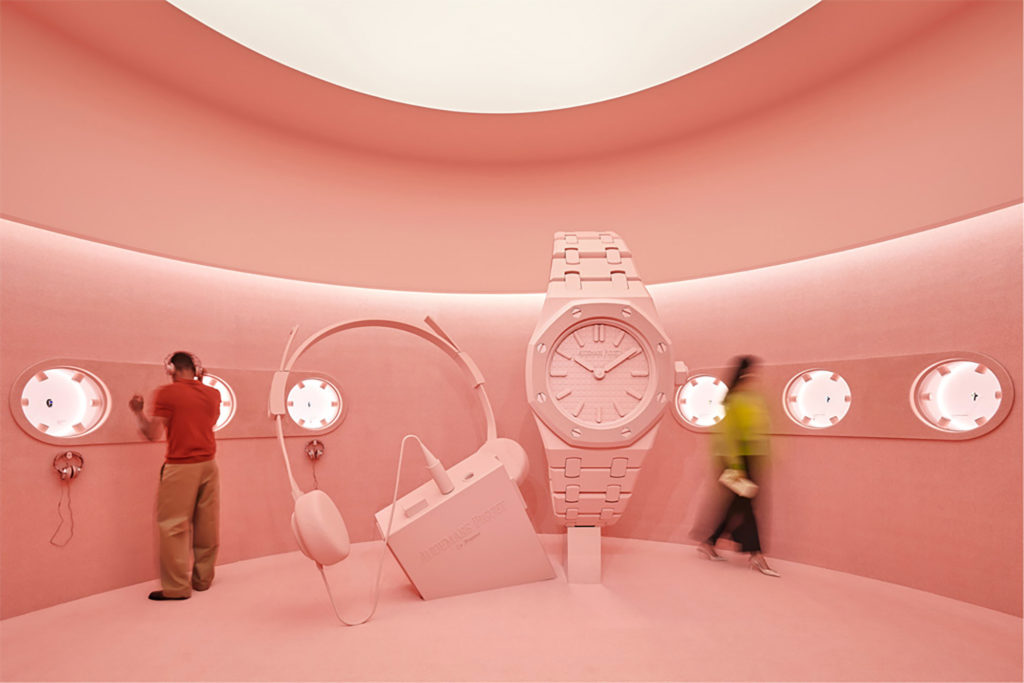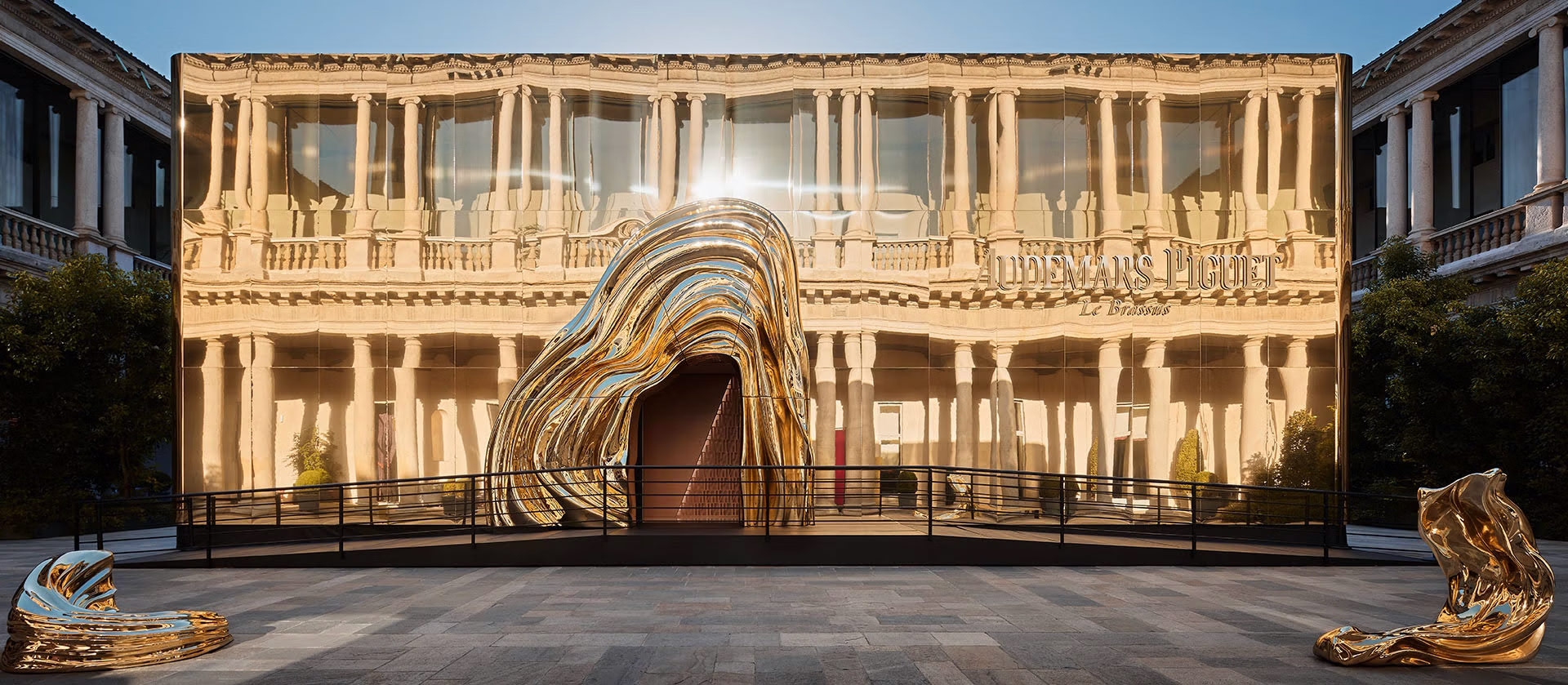Audemars Piguet – Shaping Materials
The public exhibition Shaping Materials will be on display at the Piazza del Quadrilatero in Portrait Milano, located in the heart of Milan. This immersive journey into the world of the Manufacture pays tribute to the bold and innovative spirit that has inspired generations of watchmakers and artisans to introduce new ideas and shape the world of Audemars Piguet.
Following the opening of the new AP House Milano in the brand’s building at the former Garage Traversi on Via Bagutta, the exhibition further strengthens Audemars Piguet’s connection to Milan, a city with which it shares a deep commitment to heritage, creativity, and modernity. We visited the exhibition to capture the essence and experience of this unique homage to craftsmanship and innovation. Below, we highlight some of the key dates and watch designs that the exhibition invites us to explore in the history of Audemars Piguet.
SHAPING MATERIALS
The exhibition honors the spirit of innovation that drives Audemars Piguet in its pursuit of new avenues of expression, whether focused on materials, techniques, or aesthetics. Based in the Swiss village of Le Brassus, Audemars Piguet creates masterpieces that combine centuries-old expertise with a pioneering mindset. Since 1875, the Manufacture’s watchmakers have been shaping the future through their work with materials, playing with the language of shapes and colors.
Exploring Materials
The first room is dedicated to exploring the materials used to craft Audemars Piguet watches. Settling in a land rich in iron ore, the first inhabitants of the Vallée de Joux honed their metallurgical skills. This expertise laid a solid foundation for the development of watchmaking techniques in the 18th century. Since 1875, Audemars Piguet has utilized noble and traditional materials such as gold and platinum to create its timepieces. From the 1940s onwards, the artisans of Audemars Piguet began to innovate by incorporating steel into their creations.

Innovative Use of Steel
This material was elevated in 1972 with the creation of the brand’s iconic watch, the Royal Oak. Without compromising on quality, the artisans found a way to apply high-end finishes to steel, a material much harder than gold. Following this, titanium, alacrite, rubber, ceramic, carbon, and many other materials were introduced into Audemars Piguet’s watches. The selection of these materials involves combining their ergonomics and physical properties with the overall design of the timepiece.
Pushing Boundaries
In their quest to ennoble materials, the artisans and engineers at Le Brassus have developed solutions, created new tools, and adapted their expertise in a constant drive to push the boundaries of what is possible.





